This is the seventh and final article of a series of articles detailing significant changes the Technical Committee considered for the 2015 Canadian Electrical Code Part I (CE Code). This article covers revisions in Section 64. The final meeting for 2015 CE Code changes took place in June of last year. It should be noted that the 2015 CE Code was published by the CSA January 1, 2015, and the information provided in this article is based solely on the observations of the writer.
Section 64
After a decision made by the CE Code Executive Committee and approved by the full Part I committee Section 50 Solar photovoltaic systems from the 2012 CE Code was amalgamated with Section 64 Renewable energy systems. This action resulted in a change in the scope for Section 64 deleting the reference to solar photovoltaic systems within the scope of Section 50.
The definition in the special terminology Rule 64-002 has expanded including all the definitions from Section 50 with the following changes:
The definition of “bipolar system” has been revised to be more specific to solar photovoltaic systems to read, “Bipolar system – a solar photovoltaic system that has two monopole photovoltaic source or output circuits, each having opposite polarity to a common reference point or center tap”. The definition of “Panel” has been deleted, and the definitions of “Array” and “Module” have been revised. The definition of module has been changed to Photovoltaic module —a complete, environmentally protected assembly of interconnected solar cells. The definition of array is “a mechanical integrated assembly of photovoltaic modules” with the reference to “panel” removed. The rationale for these changes was to have consistent definitions with the new CSA Standard C22.2 No 61730-1 Photovoltaic module safety qualification — Part 1: Requirements for construction.
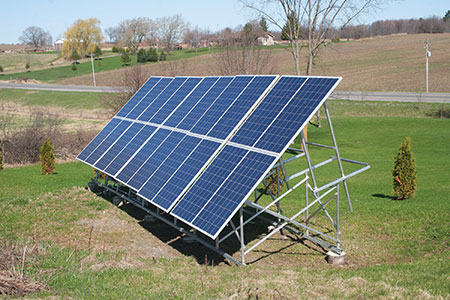
In addition to the changed definitions, five new definitions for solar photovoltaic systems have been added:
Monopole – an array or portion of an array that has two source circuit conductors, one positive (+) and one negative (-).
Photovoltaic combiner – an assembly of buses and connections that may contain overcurrent protective devices, control apparatus, switches, or other equipment, that connects photovoltaic source circuits or the outputs of other combiners together to create an output at higher current or higher voltage, or both.
Application Class A photovoltaic module – an unrestricted access module approved and marked for use in solar photovoltaic systems operating in excess of 50 V dc or in excess of 240 W.
Application Class B photovoltaic module – a restricted access module approved and marked for use in solar photovoltaic systems where the module is inaccessible to the public.
Application Class C photovoltaic module – a limited voltage, unrestricted access module, approved and marked for use in photovoltaic systems operating at 50 V dc or less and 240 W or less.
Other changes include adding the word “power” to the term “hydrokinetic power systems” throughout Section 64, and adding hydrokinetic power systems to the definition of installed capacity to read: “Installed capacity — the maximum capacity of the generating units in a micro-hydropower or hydrokinetic power system. ”
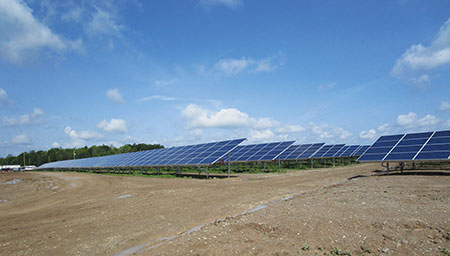
The numbering of rules in Section 64 has also changed. The general rules, formerly Rules 64-004 to 64-034, have changed to Rules 64-050 to 64-078. The rules for stationary fuel cells systems have been moved from the 64-200 series of rules to 64-700 to allow room for the solar photovoltaic rules; and storage batteries rules were moved from the 64-700 series of rules to 64-800.
In the general rules, a new rule has been inserted covering specific requirements for bipolar system installations. This new rule, numbered as Rule 64-056, will change how bipolar systems are installed by requiring monopoles of a bipolar system including the conductors from each separate monopole, disconnecting means and overcurrent protective devices to be physically separated where the voltage rating of the conductors or connected equipment is lower than the sum of the bipolar system voltages of the two monopoles. In addition, bipolar systems will require a warning notice indicating that the disconnection of the grounded conductor(s) may result in overvoltage on the equipment.
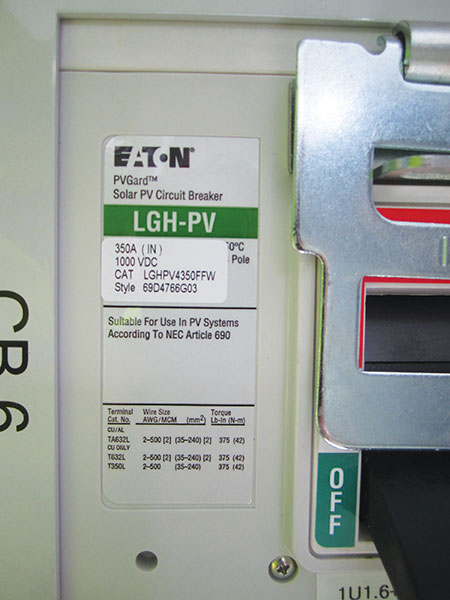
Rule 64-058 Overcurrent protection, formerly Rule 64-010, has had the reference to Rule 14-012 in Subrule (3) deleted as a duplication, as existing Rule 14-012 requires all equipment intended to interrupt current to have a sufficient voltage and interrupting rating.
Rule 64-060 Disconnecting means, formerly Rule 64-012, has two new subrules. Subrule (11) will permit a disconnecting means that is capable of being locked in the open position required for a hydrokinetic power system be located not within sight and beyond 9 m of the hydrokinetic power system equipment. Subrule (12) has added a specific requirement for photovoltaic combiner photovoltaic output circuit disconnecting means. Photovoltaic combiners with circuit breakers used to provide photovoltaic source circuits protection require the photovoltaic output circuit disconnecting means for each photovoltaic combiner to be located within 2 m of the photovoltaic combiner and photovoltaic combiners with fuses used to provide photovoltaic source circuits protection require the photovoltaic output circuit disconnecting means for each photovoltaic combiner to be located integral with or within 2 m of the photovoltaic combiner and interlocked with the combiner door.
Rule 64-062 Wiring methods, formerly Rule 64-014, has had the reference to Rule 4-008 in Subrule (1) deleted as a duplication as existing Rule 4-008 requires all conductors to be of the types specified in Table 19 for the specific condition of use. In addition, three new subrules have been added requiring ground fault protection for grounded dc supply circuits with a renewable energy system voltage of 50 V and greater. In addition to detecting and indicating a ground fault, this ground-fault protection is required to also interrupt the fault current by either causing the inverter or charge controller connected to the faulted circuit to automatically cease supplying power to output circuits, or automatically disconnect all conductors of the dc supply circuit or of the faulted portion of the dc supply circuit. The grounding conductor is permitted to be connected to the grounding electrode via the ground fault protection device provided that such connection is not duplicated by an external connection of a grounding conductor to the grounding electrode.

Rule 64-068 Grounding electrodes and grounding conductors, formerly Rule 64-020, has had the reference to Section 10 in Subrule (1) deleted to avoid duplication, as existing Rules require all grounding electrodes and grounding conductors to be installed in accordance with Section 10
Subrule (3) of Rule 64-074 Warning notice and diagram, formerly Rule 64-026, has introduced a newly added requirement that the permanent plaque or directory identifying all electrical power sources on or in the premises is to be installed at the supply authority meter location in addition to the existing requirement to have the identification at each service equipment location.
Rule 64-200 Marking, formerly Rule 50-004, has two new subrules. One new subrule requires photovoltaic system warning signs to have capitalized letters with a minimum height of 9. 5 mm, in white on red background; the other new subrule requires photovoltaic systems with a rapid shutdown device be provided with a permanent marking at the disconnecting means for the photovoltaic output circuit to read: PHOTOVOLTAIC SYSTEM EQUIPPED WITH RAPID SHUTDOWN, or equivalent. The requirement for photovoltaic system rapid shutdown is a new safety provision, which is described in Rule 64-218. This photovoltaic system rapid shutdown is required to limit photovoltaic source or output circuits to not more than 30 volts and 240 volt-amperes within 10 seconds of rapid shutdown initiation, and is required for all systems installed on buildings or structures where the photovoltaic source or output circuit conductors installed on or in buildings are more than 1. 5 m in length or more than 3 m from a photovoltaic array
Two new subrules have been added to the existing Rule 50-006 renumbered as Rule 64-202 Voltage of solar photovoltaic systems. New Subrule (4) will limit the maximum dc voltage from photovoltaic source and output circuit voltage in or on dwelling units to 600 V. This subrule will also require access to energized parts over 150 V to qualified persons only, and circuits inside the building that are over 30 volts to be installed in metallic raceways, metal enclosures, or cables with a metal armour or metal sheath. The objective of this requirement was to address safety of installations in dwelling units at voltages between 30 and 600 Vdc and to harmonize with existing requirements in Section 64. Subrule (5) addresses non-dwelling unit installation with a maximum dc circuit voltage between 750 and 1000 V. This new subrule will exempt dc photovoltaic between 750 and 1000 V from meeting the visible isolation and interlocking requirements of Rules 36-204, 36-208, and 36-214 for high voltage installations. This subrule was added to address the increasing number of photovoltaic farms with dc voltages up to 1000 V.
Rule 64-206, formerly Rule 50-008, has been expanded to include the ampere rating of photovoltaic source and output circuits. Also Subrule (2) that read “for application of Rule 8-104, the continuous load shall be considered to be 125% of the rated short-circuit current”, has been deleted. Rationale provided with the proposal to change this rule recognised that overcurrent protection sized based on the Subrule (2) in the previous edition of the CE Code cannot adequately protect the circuit.
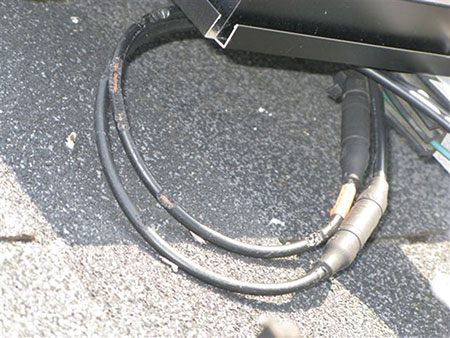
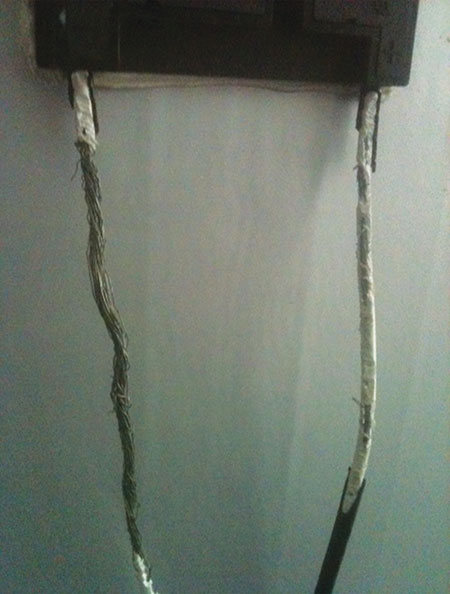
New Rule 64-208 Photovoltaic module application class use provides direction on the location where photovoltaic modules can be installed. Photovoltaic modules marked with an application Class B are not permitted for installations accessible to the public. Examples of installation of photovoltaic modules that are not accessible to the public are photovoltaic modules located elevated at 3 m or more above grade level or any surface that a person can stand, and photovoltaic modules located within a fenced enclosure installed accordance with Rule 26-300. Photovoltaic modules marked with application Class A or Class C are permitted to be installed in a location accessible to the public. Modules without an application class marking are considered to be application Class A.
Two new subrules have been added to Rule 64-210 (formerly known as Rule 50-018). The first addition requires photovoltaic module interconnecting cables be supported at intervals of not more than 1 m and within 300 mm of every box or connector, and that the cables be protected against mechanical damage during and after the installation. An Appendix B note has also been added to clarify that the intent of subrule is to prevent damage to solar photovoltaic cable from rubbing on surfaces such as roofing and array structures. The second new subrule will require photovoltaic source circuits installed on or above a building be protected against damage from rodents unless dc arc-fault protection is located at the module. An Appendix B note has also been added indicating that material such as expanded metal, solid metal, and screening can be used to enclose photovoltaic source circuit conductors as protection against damage from rodents. The rationale for this subrule was to address concerns raised during the development of the recently published CSA SPE-900 Solar photovoltaic rooftop-installation best practices guidelines.
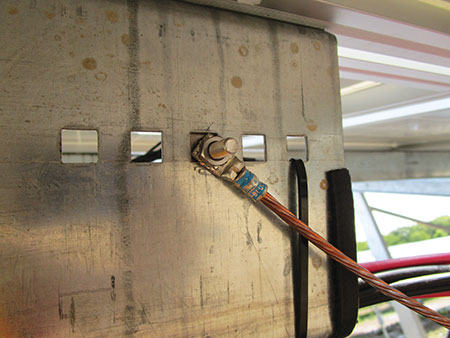
New Rule 64-212 Conductor marking or colour coding has been added to provide direction for photovoltaic system installation conductor marking or colour coding.
A new rule will require dc photovoltaic circuits installed between the modules and the power conditioning unit to be identified as red for positive and black for negative; or black conductors manufactured with permanent surface printing indicating the polarity on the conductor. This subrule will not allow field marking or labelling of single conductors; the cable must be supplied with permanent identification. Field colour-coding for conductors of multi-conductor cables will be permitted provided the colour-coding for conductors is at every point where the separate conductors are accessible. An Appendix B note has been added to indicate that CSA Standard C22. 2 No 271 Photovoltaic Cables allows the positive or negative identification on RPV or RPVU conductor cables to be “+/–”, “pos/neg”, or “positive/negative”. The rationale for this new rule was based on a direct result of photovoltaic installation fires caused by unidentified and miss-identified conductors connected reverse polarity.
Rule 64-214 Overcurrent protection for apparatus and conductors, formerly Rule 50-012, has two newly inserted subrules numbered (3) and (4) that limit the rating of the overcurrent device for individual source circuits to be not greater than the rated short-circuit current of that photovoltaic source circuit.
The next higher standard rating of overcurrent protection device is permitted where a rated short-circuit current does not correspond to the standard rating of the overcurrent device.
The words “on or penetrating a building” have been deleted from Subrule (1) of Rule 64-216 Photovoltaic dc arc-fault circuit protection (formerly Rule 50-014). This change harmonizes requirements in the CE Code with the National Electrical Code requiring all installation with a maximum system voltage of 80 volts or greater to be provided with dc arc-fault protection.
Rule 64-222 Photovoltaic module bonding has expanded the requirements of Rule 50-022 in the 2012 CE Code, by adding three new subrules that require all exposed metal parts of photovoltaic modules to be bonded to ground in accordance with the photovoltaic module or bonding connector manufacturer’s installation instructions. These subrules were added to address bonding connection corrosion issues where installers did not follow the installation instruction, and to recognize the importance of installing the photovoltaic module bonding as it was specifically approved and tested.
2012 CE Code Rules 50-024, 50-028, 64-030, and 64-034 covering interconnected systems and systems over 750 volts have also been deleted to avoid duplication of existing requirements already covered in Sections 36 and 84. In addition, Rule 50-028 was also deleted as the requirements for system grounding were already covered in Section 64.
In the rules for small wind turbines, large wind turbines, micro-hydropower systems, hydrokinetic power systems, stationary fuel cell systems, and storage batteries; references to requirements covered by other rules in the general sections of the CE Code have been deleted as duplications. These duplications include references to conductor and cable types, grounding and bonding, wiring methods, overcurrent protection of conductors and equipment, disconnecting means, large system ground-fault protection, generator overload protection, and surge protective devices. In addition, the reference to hazardous location requirements has been deleted from Rule 64-718 for fuel cells as the requirements are already covered in Section 18.

The marking requirements in Rule 64-300 for small wind turbines change by making the markings required by Rule 2-100 to be readily accessible, and the addition of a new Subrule (2) that moved the requirements for a plaque with specific instructions for disabling the turbine to be installed from Rule 64-320.
New inserted Rules 64-314 and 64-410 Receptacles for maintenance have been added requiring a CSA configuration 5-15R or 5-20R receptacle that is protected by a ground-fault circuit interrupter of the Class A type to be installed at all wind turbines for maintenance of the wind turbine. This requirement was added for safety of maintenance personnel and to harmonise with similar provisions of the National Electrical Code.
Rule 64-400 Marking has two additions; first, is the addition of Item (f) to Subrule (1) that moves the requirements for labeling of interconnected systems from Rule 64-414. The second is a new Subrule (2) that requires electrical shock and arc flash labels supplied and installed by the wind turbine manufacturer on the wind turbine access door and within wind turbines to be completed, providing information required for personnel to select the appropriate personal protective equipment when working within the large wind turbine. This requirement addresses limited working space for wind turbines where the working space requirements of Rule 2-308 and 2-310 are not met, by requiring labelling to inform all personnel working within the wind turbine that appropriate personal protective equipment must be worn.










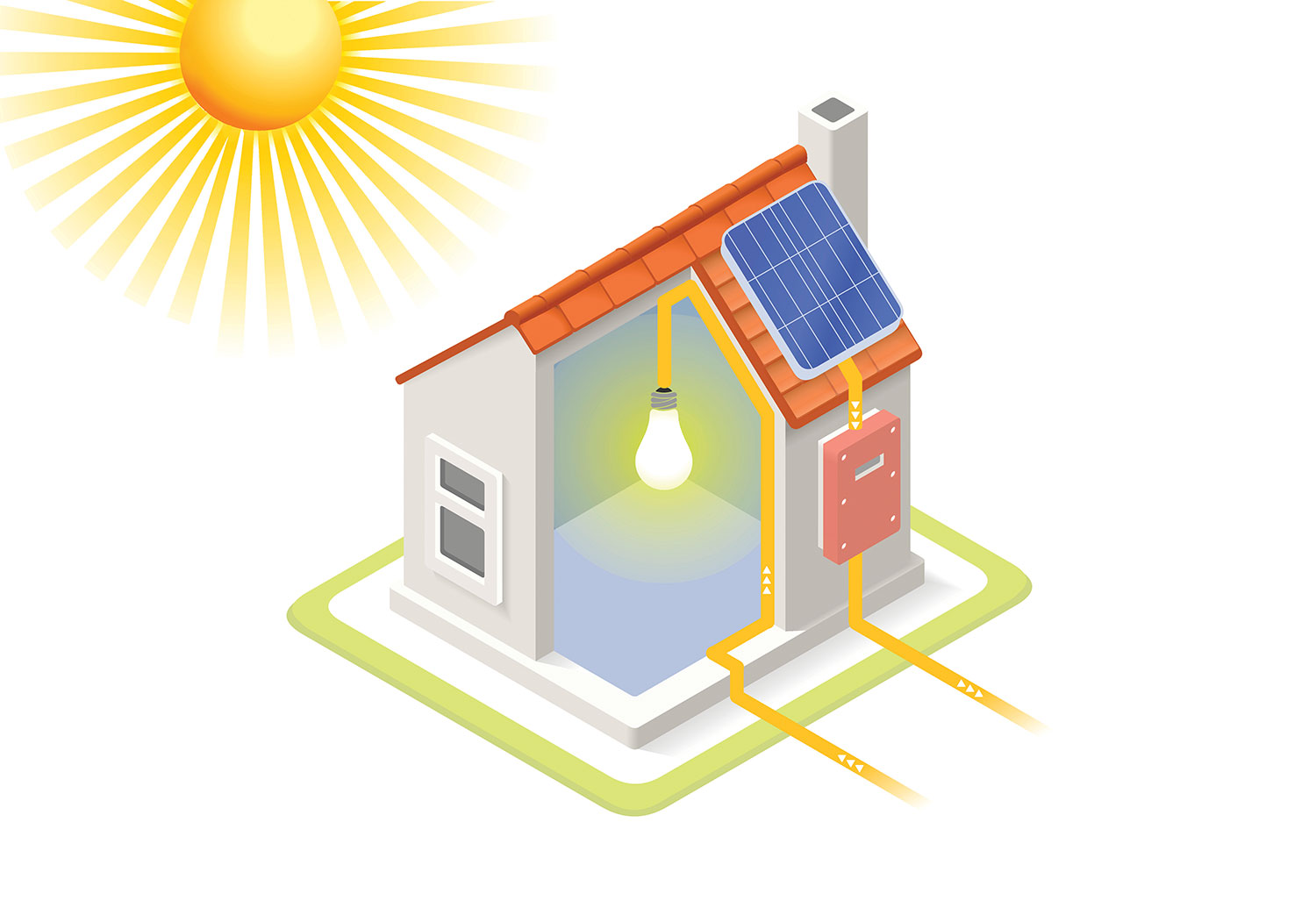
Find Us on Socials